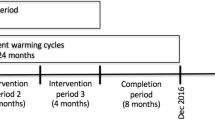Abstract
Purpose
To characterize the likelihood of cryopreserving enough oocytes for 50%, 60%, or 70% estimated live birth rate (eLBR) with 1–2 planned oocyte cryopreservation (Pl-OC) cycles.
Methods
We performed a retrospective cohort study utilizing all patients completing ≥ 1 Pl-OC cycle from 2016 to 2018 at a large single-center OC program. Subjects were categorized by age at retrieval and number of cycles. We extrapolated age-based oocyte thresholds for 50%, 60%, or 70% eLBR from previously published data. We calculated the proportion of subjects overall, and for each age group, whose number of frozen oocytes was greater than or equal to their age-based threshold for a 50%, 60%, or 70% eLBR after 1 and 2 cycles. OR for 60% eLBR with one cycle was calculated for age and AMH cutoff values and corroborated with logistic regression.
Results
A total of 1241 subjects, completing 1799 Pl-OC cycles, were included. With one cycle, 66% (819/1241) achieved ≥ 50% eLBR and 51% (634/1241) achieved 70% eLBR. With two cycles, 79.6% (988/1241) attained ≥ 50% eLBR and 65.5% (813/1241) achieved 70% eLBR. Achieving 50%, 60%, or 70% eLBR with 1–2 cycles was significantly associated with both age (p < 0.001) and AMH (p < 0.001). Age < 37.5 and AMH > 1.995 were independently associated with attaining 60% eLBR with one cycle (age: OR 13.73; 95%CI 9.16–20.57, p < 0.001; AMH: OR 7.32; 95% CI 5.50–9.76, p < 0.001).
Conclusions
Younger age and higher AMH were associated with achieving 50%, 60%, or 70% eLBR thresholds with Pl-OC. Nevertheless, almost all subjects were successfully able to preserve enough oocytes for ≥ 50% eLBR in 1–2 cycles.


Similar content being viewed by others
References
National Summary Report [Internet]. [cited 2019 Feb 13];Available from: https://www.sartcorsonline.com/rptCSR_PublicMultYear.aspx?reportingYear=2016
Daar J, Benward J, Collins L, Davis J, Davis O, Francis L, et al. Planned oocyte cryopreservation for women seeking to preserve future reproductive potential: an ethics committee opinion. Fertil Steril. 2018;110(6):1022–8.
Rukhsana J, Perrotta PL, Okorodudu AO, Petersen JR, Mohammad AA. Fit-for-purpose evaluation of architect i1000SR immunoassay analyzer. Clin Chim Acta Int J Clin Chem. 2010;411(11–12):798–801.
Doyle JO, Richter KS, Lim J, Stillman RJ, Graham JR, Tucker MJ. Successful elective and medically indicated oocyte vitrification and warming for autologous in vitro fertilization, with predicted birth probabilities for fertility preservation according to number of cryopreserved oocytes and age at retrieval. Fertil Steril. 2016;105(2):459–466.e2.
Goldman RH, Racowsky C, Farland LV, Munné S, Ribustello L, Fox JH. Predicting the likelihood of live birth for elective oocyte cryopreservation: a counseling tool for physicians and patients. Hum Reprod. 2017;32(4):853–9.
van Loendersloot LL, Moolenaar LM, Mol BWJ, Repping S, van der Veen F, Goddijn M. Expanding reproductive lifespan: a cost-effectiveness study on oocyte freezing. Hum Reprod. 2011;26(11):3054–60.
Hirshfeld-Cytron J, Grobman WA, Milad MP. Fertility preservation for social indications: a cost-based decision analysis. Fertil Steril. 2012;97(3):665–70.
Devine K, Mumford SL, Goldman KN, Hodes-Wertz B, Druckenmiller S, Propst AM, et al. Baby budgeting: oocyte cryopreservation in women delaying reproduction can reduce cost per live birth. Fertil Steril. 2015;103(6):1446–1453.e2.
Mesen TB, Mersereau JE, Kane JB, Steiner AZ. Optimal timing for elective egg freezing. Fertil Steril. 2015;103(6):1551–1556.e4.
Devesa M, Tur R, Rodríguez I, Coroleu B, Martínez F, Polyzos NP. Cumulative live birth rates and number of oocytes retrieved in women of advanced age. A single centre analysis including 4500 women ≥38 years old. Hum Reprod. 2018;33(11):2010–7.
Cobo A, García-Velasco JA, Coello A, Domingo J, Pellicer A, Remohí J. Oocyte vitrification as an efficient option for elective fertility preservation. Fertil Steril. 2016;105(3):755–764.e8.
Inhorn MC, Birenbaum-Carmeli D, Birger J, Westphal LM, Doyle J, Gleicher N, et al. Elective egg freezing and its underlying socio-demography: a binational analysis with global implications. Reprod Biol Endocrinol. 2018;16(1) [Internet]. [cited 2019 Jan 29]. Available from: https://rbej.biomedcentral.com/articles/10.1186/s12958-018-0389-z.
Baldwin K, Culley L. Women’s experience of social egg freezing: perceptions of success, risks, and “going it alone.”. Hum Fertil (Camb). 2018:1–7. https://doi.org/10.1080/14647273.2018.1522456.
Baldwin K, Culley L, Hudson N, Mitchell H, Lavery S. Oocyte cryopreservation for social reasons: demographic profile and disposal intentions of UK users. Reprod BioMed Online. [Internet] [cited 2015 Jul 8];Available from: https://doi.org/10.1016/j.rbmo.2015.04.010.
Fritz R, Klugman S, Lieman H, Schulkin J, Taouk L, Castleberry N, et al. Counseling patients on reproductive aging and elective fertility preservation-a survey of obstetricians and gynecologists’ experience, approach, and knowledge. J Assist Reprod Genet. 2018;35(9):1613–21.
Stevenson EL, Gispanski L, Fields K, Cappadora M, Hurt M. Knowledge and decision making about future fertility and oocyte cryopreservation among young women. Hum Fertil. 2019;0(0):1–10.
Greenwood EA, Pasch LA, Hastie J, Cedars MI, Huddleston HG. To freeze or not to freeze: decision regret and satisfaction following elective oocyte cryopreservation. Fertil Steril. 2018;109(6):1097–1104.e1.
Author information
Authors and Affiliations
Corresponding author
Ethics declarations
Conflict of interest
The authors declare that they have no conflict of interest.
Additional information
Publisher’s note
Springer Nature remains neutral with regard to jurisdictional claims in published maps and institutional affiliations.
Electronic supplementary material
Supplementary Figure 1
ROC curve for AMH levels achieving a 60% eLBR with first cycle. AUC 0.80 (95% CI 0.77–0.82, p < 0.001). Youden’s J-index analysis yielded AMH 1.995 as best cutoff for prediction of achieving 60% eLBR in first cycle. (DOCX 33 kb).
Supplementary Fig. 2
ROC curve for age as a predictor of achieving a 60% eLBR with first cycle. AUC 0.74 (95% CI 0.71–0.77, p < 0.001). Youden’s J-index analysis yielded 37.5 year as best age cutoff for prediction of achieving 60% eLBR in first cycle (DOCX 49 kb) (DOCX 29 kb).
Rights and permissions
About this article
Cite this article
Maslow, BS.L., Guarnaccia, M.M., Ramirez, L. et al. Likelihood of achieving a 50%, 60%, or 70% estimated live birth rate threshold with 1 or 2 cycles of planned oocyte cryopreservation. J Assist Reprod Genet 37, 1637–1643 (2020). https://doi.org/10.1007/s10815-020-01791-w
Received:
Accepted:
Published:
Issue Date:
DOI: https://doi.org/10.1007/s10815-020-01791-w




